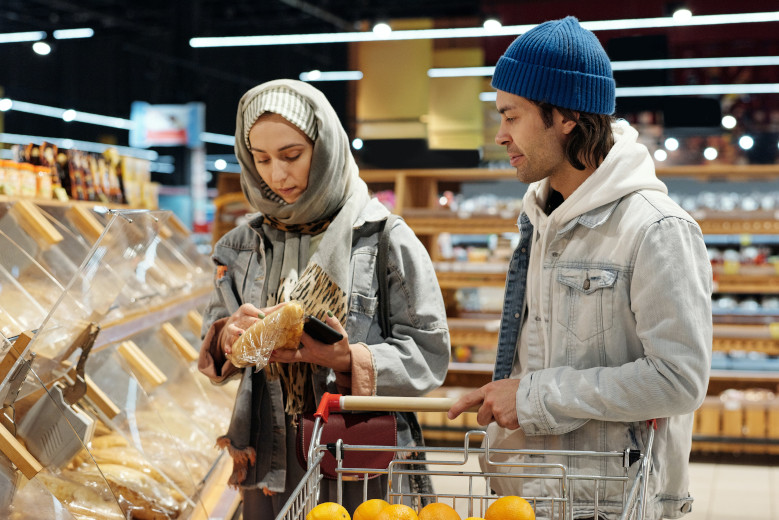
As prices continue to rise, IRI observes a return to 1970s and 1980s behavior, with deepening inflation fatigue. Consumers are making difficult trade-offs in their shopping baskets and are focusing on essentials. Resilient categories like Chilled & Fresh, Ambient, Beverages and Personal Care are being offset by value sales declines in Alcohol and Household Care.
Consumers are reacting to inflationary pressures that force supermarkets to hike their prices. Combined with higher energy prices, slow wage growth and supply-side shortages, shoppers are making difficult choices in their day-to-day spending, IRI research outlines. The result is low consumer confidence and less disposable income. For many, it is also a return to the kind of austerity shopping behaviors that were common decades ago. “We are seeing new coping behaviors as a result of ‘inflation fatigue’, with consumers taking control and making decisions about where and how they shop, what they buy, and how they consume. As prices continue to rise, consumers are making difficult trade-offs in their shopping baskets, focusing on essentials,” IRI says. Fewer promotions post-pandemic are making way for the return of everyday low pricing, as retailers try to mitigate the impact of food price inflation.
The IRI report, which analyzes in-store purchases for the year ending July 2022, combined with a consumer survey of 3,000 global shoppers, shows that deteriorating disposable income is affecting middle- and low-income consumers across the developed world.
IRI Insight 1: Consumers in crisis – shoppers adapt as inflation fatigue kicks in
Retailers and manufacturers are witnessing some of the biggest changes in shopper behavior in the last five decades, affecting their ability to buy and willingness to spend. Consumers, feeling the impact of inflation and seeing no end in sight, are losing confidence.
They are adapting and relying on personal savings to get by – 58% say they have cut down on essentials, such as missing meals and heating, and 35% are relying on personal savings and loans to pay bills. With ‘inflation fatigue’ kicking in, consumers are taking control of their spending, choosing where to shop to moderate the effects of the crisis.
In Europe, 30% of consumers will change where they buy everyday products to get a better deal, 26% go to another shop if their regular brand is not available, 34% go to another shop if a regular brand is not on promotion, and 41% go to another shop if there are no deals, IRI market research shows.
New occasions and moments for familiar everyday products are also important to shoppers, offering FMCG brands and retailers an opportunity to tap into these through new product innovation. Packed lunches at work, specialty coffees, pre-mixed spirits drunk at home, showering at the gym, and home hair styling are becoming popular again, while cooking fresh from home and the use of meal kits are replacing takeaways and eating out.
Choosing a new brand for shoppers is now all about price (62%), availability (49%), and high levels of on-shelf promotion (37%). Less important is whether it is of better quality (15%), innovative (8%), or makes shopping easier (8%). It is also about tapping into new needs – sandwich fillings for packed lunches, coffee accessories and premium products, and new packaging and pack sizes for personal items used at the gym.
Iri Insight 2: FMCG category in transition as the outlook for 2023 darkens
In 2022, the picture for FMCG looks quite different from how it looked during the pandemic years. The total category growth is +1.5% vs a year ago (YAGO) adding EUR 9Bn and worth EUR 593.4 Bn in value sales.
Germany, Spain, and Italy are responsible for driving FMCG growth across most food and non-food categories, but this is largely down to rising inflation levels in these markets. In FMCG food categories, growth rates in Europe are accelerating to levels in the US, where shoppers have had to cope with higher inflation for longer.
This applies across all markets for value sales MAT (Moving Annual Total for a full year ended July
Iri Insight 3: Gap closes further – Private Label loyalists now equal those of national brands
Private Labels are returning to pre-pandemic levels with value sales growth up +5.4% compared to the same time last year. Private Labels now contribute EUR 216 Bn or 36.4% of FMCG value sales in 2022.
Retailers are reacting in line with changing consumer behaviors: supermarkets are keen to avoid a return to the 2008-9 financial crisis and another all-out price war, IRI says.
Photo: Pexels


